The NVIDIA GeForce GTX 1660 Ti Review, Feat. EVGA XC GAMING: Turing Sheds RTX for the Mainstream Market
by Ryan Smith & Nate Oh on February 22, 2019 9:00 AM ESTCompute & Synthetics
Shifting gears, we'll look at the compute and synthetic aspects of the GTX 1660 Ti.
Beginning with CompuBench 2.0, the latest iteration of Kishonti's GPU compute benchmark suite offers a wide array of different practical compute workloads, and we’ve decided to focus on level set segmentation, optical flow modeling, and N-Body physics simulations.

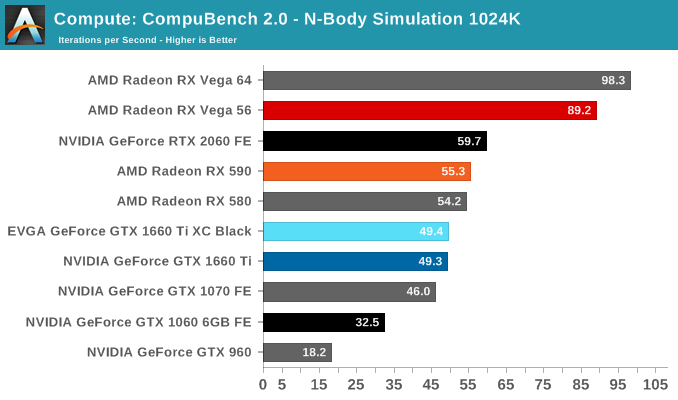
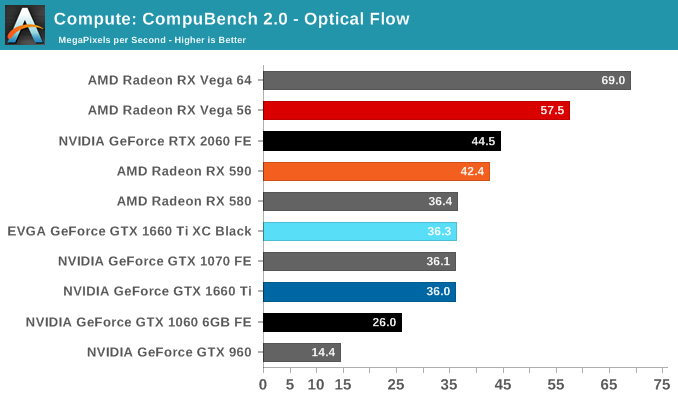
On paper, the GTX 1660 Ti looks to provide around 85% of the RTX 2060's compute and shading throughput; for Compubench, we see it achieving around 82% of the latter's performance.
Moving on, we'll also look at single precision floating point performance with FAHBench, the official Folding @ Home benchmark. Folding @ Home is the popular Stanford-backed research and distributed computing initiative that has work distributed to millions of volunteer computers over the internet, each of which is responsible for a tiny slice of a protein folding simulation. FAHBench can test both single precision and double precision floating point performance, with single precision being the most useful metric for most consumer cards due to their low double precision performance.
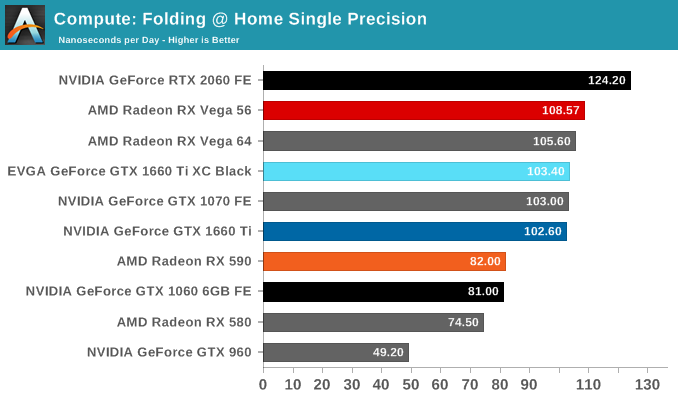
Next is Geekbench 4's GPU compute suite. A multi-faceted test suite, Geekbench 4 runs seven different GPU sub-tests, ranging from face detection to FFTs, and then averages out their scores via their geometric mean. As a result Geekbench 4 isn't testing any one workload, but rather is an average of many different basic workloads.
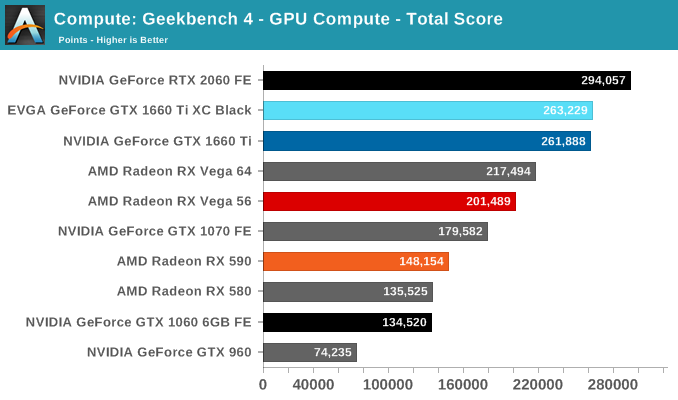
In lieu of Blender, which has yet to officially release a stable version with CUDA 10 support, we have the LuxRender-based LuxMark (OpenCL) and V-Ray (OpenCL and CUDA).
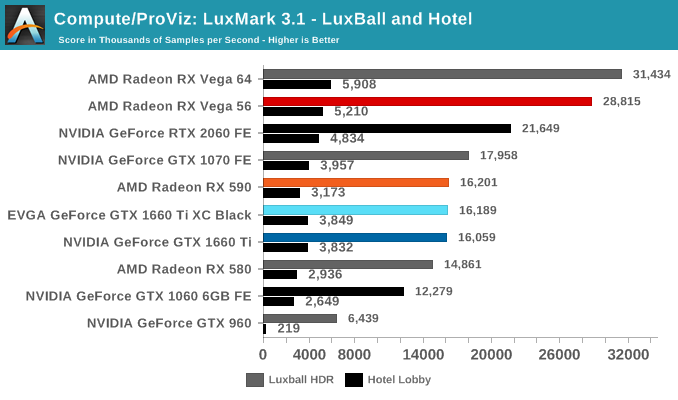
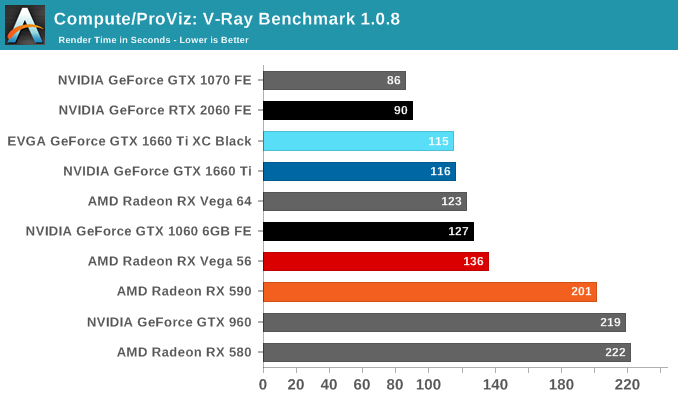
We'll also take a quick look at tessellation performance.
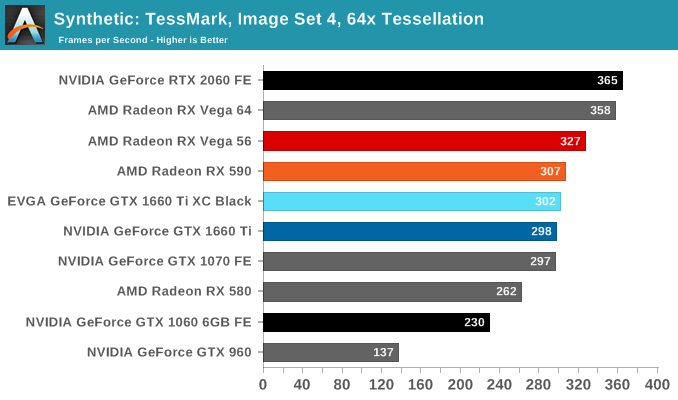
Finally, for looking at texel and pixel fillrate, we have the Beyond3D Test Suite. This test offers a slew of additional tests – many of which we use behind the scenes or in our earlier architectural analysis – but for now we’ll stick to simple pixel and texel fillrates.
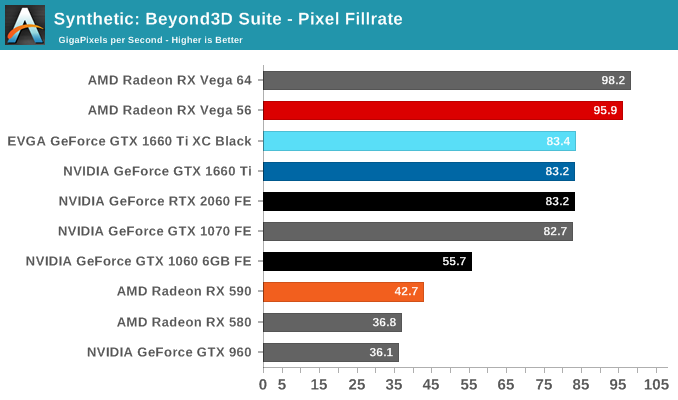
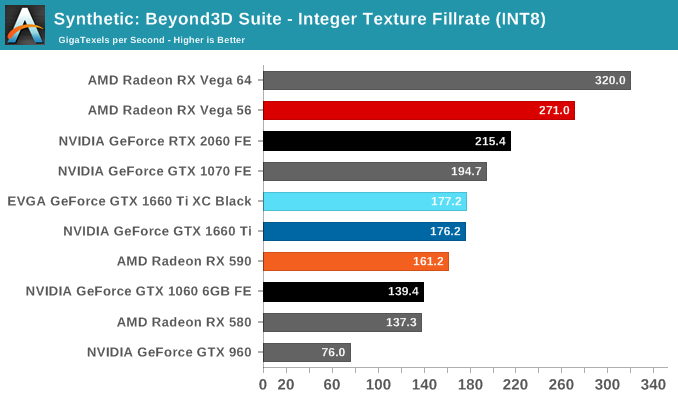
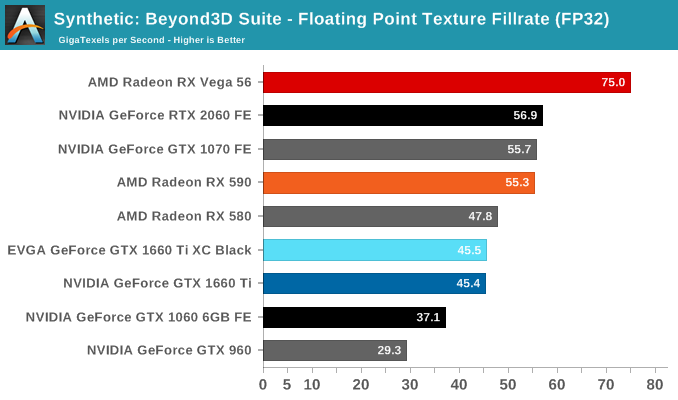
The practically identical pixel fill rates for the GTX 1660 Ti and RTX 2060 might seem odd at first blush, but it is an entirely expected result as both GPUs have the same number of ROPs, similar clockspeeds, same GPC/TPC setup, and similar memory configurations. And being the same generation/architecture, there aren't any changes or improvements to DCC. In the same vein, the RTX 2060 puts up a 25% higher texture fillrate over the GTX 1660 Ti as a consequence of having 25% more TMUs (96 vs 120).










157 Comments
View All Comments
PeachNCream - Friday, February 22, 2019 - link
This article reads a little like that infamous Steve Ballmer developers thing except it's not "developers, developers, developers, etc" but "traditional, traditional, traditionally, etc." instead. Please explore alternate expressions. The word in question implies long history which is something the computing industry lacks and the even shorter time periods referenced (a GPU generation or two) most certainly lack so the overuse stands out like a sore thumb in many of Anandtech's publications.Oxford Guy - Saturday, February 23, 2019 - link
How about the utterly asinine use of the word "kit" to describe a set of RAM sticks that simply snap into a motherboard?The Altair 8800 was a kit. The Heathkit H8 was a kit. Two sticks of RAM that snap into a board doth not a kit maketh.
futurepastnow - Friday, February 22, 2019 - link
A triple-slot card? Really, EVGA?PeachNCream - Friday, February 22, 2019 - link
Yup, for 120W TDP of all things. But it's in the charts as a 2.75 slot width card so EVGA is probably hoping that no one understands how expansion slots actually would not permit the remaining .25 slot width to support anything.darckhart - Friday, February 22, 2019 - link
lol this was my first thought upon seeing the photo as well.GreenReaper - Saturday, February 23, 2019 - link
I suspect it was the cheapest way to get that level of cooling. A more compact heatsink-fan combo could have cost more.130W (which is the TDP here) is not a *trivial* amount to dissipate, and it's quite tightly packed.
Oxford Guy - Saturday, February 23, 2019 - link
I think all performance GPUs should be triple slot. In fact, I think the GPU form factor is ridiculously obsolete.Oxford Guy - Monday, February 25, 2019 - link
Judging by techpowerup's reviews, though, the EVGA card's cooling is inefficient.eastcoast_pete - Friday, February 22, 2019 - link
@Ryan and Nate: What generation of HDMI and DP does the EVGA card have/support? Apologize if you had it listed and I missed it.Ryan Smith - Friday, February 22, 2019 - link
HDMI 2.0b, DisplayPort 1.4.